
Jason Camlot, “The First Phonogramic Poem: Conceptions of Genre and Media Format, Circa 1888”
By 1888, the technology of the phonograph, and the medium of the phonograph cylinder, were established as market-ready. What was the imagined potential of this media technology in relation to known modes of communication and expression? This article recounts how “The Phonogram” or phonographic letter was prototyped from 1887 to 1892 through the efforts of Thomas Alva Edison and his London agent George Gouraud. Edison’s prototyping work and Gouraud’s efforts in developing recordings, scripts for phonogramic speeches, and formats for typographical transcription of the cylinder recordings represent a rich case study for documenting the nature and significance of their efforts to consolidate the medium and define the generic parameters of the phonogram (a speech recording) as a distinct form of global communication. By theorizing the relationship between late-Victorian concepts of medium, format and genre, respectively, and by interpreting the “first phonogramic poem” (16 June 1888) as an articulation of the meaning of sound recording at the historical moment that it arrived as a viable media technology, this article helps explain how sound recording technologies were imagined in relation to specific genres of communication. Drawing upon periodical literature, and documentation available through the Thomas Edison Papers archive—including phonogramic transcripts and speeches, marketing and foreign business strategies, patent applications, and packaging and design documents—this article explains, in particular, the generic and rhetorical protocols that informed the attempt to establish the phonogram as a new medium of intimate communication and international correspondence.
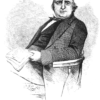
Janice Schroeder, “The Publishing History of Henry Mayhew’s London Labour and the London Poor”
Versions of Henry Mayhew’s massive social survey London Labour and the London Poor appeared in several publishing formats, including newspaper column, weekly serial, live stage show, and bound volume. This article traces the republication and remediation of London Labour alongside Mayhew’s repackaging of his interviews with London “street-folk” from 1849 onwards. I offer a succinct, accessible account of the complex publishing history of the text, from print newspaper column to digital edition.
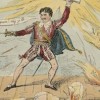
Jonathan Mulrooney, “Edmund Kean, Event”
This article considers Regency actor Edmund Kean’s presence as a figure in the theatrical news of the day, arguing that Kean’s acting style, coupled with changes in periodical print culture, reframed the relation between the British theatrical tradition, the actor’s stage performance, and audience reception. Emphasizing an “illegitimate” grammar of representation characterized by gesture, mobility, and emotional transition, Kean enacted new forms of subjectivity that aligned with emerging modes of theatrical criticism to shape readers’ concepts of their own private experience and their imagined engagement with public events.

Kathleen Frederickson, “British Writers on Population, Infrastructure, and the Great Indian Famine of 1876-8”
This article examines British writing about the 1876-8 famine in southern and western India. In British newspapers and journals, the turn to thinking about famine in terms of the total population obscured the extreme variations in food access that worsened with rising economic inequality. When the British press in the late-1870s turned to human causes of famine, they either argued that India’s population overburdened India’s land, or suggested that more rail construction would prevent enough deaths sufficiently to mitigate British responsibility for famine conditions. The turn to population-based arguments helped either to perpetuate the belief that famine was a quasi-natural part of India or to parse the sudden increase in the frequency and severity famines in India under British rule.
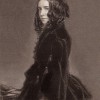
Marjorie Stone, “The ‘Advent’ of Aurora Leigh: Critical Myths and Periodical Debates”
Released by Chapman and Hall on 15 November 1856, Elizabeth Barrett Browning’s Aurora Leigh—a verse-novel and modern epic—set off literary, social, and political reverberations in Britain, North America, and Europe up to the end of the century. “The advent of ‘Aurora Leigh’ can never be forgotten by any lover of poetry who was old enough at the time to read it,” Algernon Charles Swinburne recalled in 1898. By 1900, Aurora Leigh—among much else the first extended poetical portrait of the professional woman writer in English literature—had appeared in more than twenty editions in England and as many in America. Given its innovative, generically mixed form and its controversial contemporary subject matter, it figured in debates over poetry and poetics, the nature of the realist novel, class divisions and social reform, women’s rights, religion, and the politics of nations. Contrary to the critical legend that Aurora Leigh was greeted by an “avalanche of negative reviews,” responses to it were diverse, shaped by periodical competition and differing print-culture, artistic, political, national and religious contexts. This essay surveys seldom-cited notices in the transatlantic daily and weekly press, analyzes critical debates on Aurora Leigh in the major British periodicals, and charts differing patterns in its American and European as compared to its British reception in the years immediately following its publication. It also indicates at points how debates over Aurora Leigh were intertwined with debates in the visual arts associated with the paintings of J. M. W. Turner and the Pre-Raphaelites.
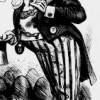
T. J. Tallie, “On Zulu King Cetshwayo kaMpande’s Visit to London, August 1882”
In August of 1882, the deposed Zulu monarch Cetshwayo kaMpande arrived in London to plead for the restoration of his kingdom, from which he had been deposed following the Anglo-Zulu War of 1879. Despite the ferocity of the war, particularly after Britain’s humiliating defeat at the Battle of Isandhlwana in January 1879, the newly elected Gladstone government sought to repudiate larger imperial goals and reversed their decision, approving Cetshwayo’s restoration. This article focuses on the depictions of Cetshwayo in the metropolitan press during his momentous 1882 visit.
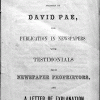
Graham Law, “22 May 1891: Ouida’s Attack on Fiction Syndication”
This essay explores the underlying developments which provoked the romantic novelist Ouida to launch a virulent attack in the correspondence columns of The Times on the syndication of fiction – that is, its broadcast distribution in newspapers – as the most alarming symptom of the commercialization of literature in the late nineteenth century.

Lorraine Janzen Kooistra, “The Moxon Tennyson as Textual Event: 1857, Wood Engraving, and Visual Culture”
By convention the launch of the so-called “golden age” of wood-engraved illustration in Britain, also known as “the sixties,” is Edward Moxon’s publication, in May 1857, of Alfred Tennyson’s Poems, with 54 wood-engraved illustrations designed by 8 artists, including the Pre-Raphaelites John Everett Millais, William Holman Hunt, and Dante Gabriel Rossetti. Although the Moxon Tennyson was neither a commercial nor critical success on first publication, before the decade was out its Pre-Raphaelite designs were considered a touchstone for artistic illustration, a reputation that continues today. Without disputing the significance of this aesthetic achievement, I want to shift critical focus to the Moxon Tennyson’s status as mass-produced work of art in the age of mechanical reproduction. My interest here is in how its visual communication was expressed through its reproductive technology at the historical moment of its production and reception. This essay re-positions the Moxon Tennyson as a textual event by reading it in the context of documentary, satiric, and artistic wood-engraved images selected from the crucial six-month period after its publication. By situating the Pre-Raphaelite illustrations for Tennyson’s Poems in relation to representations in the public press of such disparate events as the Art Treasures of the United Kingdom Exhibition in Manchester, the reportage on Indian uprisings at Meerut and Cawnpore, the Matrimonial Causes Act, and the Christy Minstrels show in London, I aim to show the complex ways in which the Moxon Tennyson was a worldly event, caught up in, and contributing to, ways of seeing and knowing in 1857.
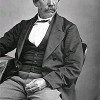
Matthew Rubery, “On Henry Morton Stanley’s Search for Dr. Livingstone, 1871-72”
The meeting between Henry Morton Stanley and Dr. David Livingstone in Africa was one of the most sensational news stories of the nineteenth century. Stanley’s greeting, “Dr. Livingstone, I presume?” is still a well known phrase. The Scottish missionary had been out of contact for several years when an American newspaper sent its correspondent to search for him. The meeting turned public attention to the African slave trade and was a pivotal moment in the relationship among the United States, Europe, and Africa.
